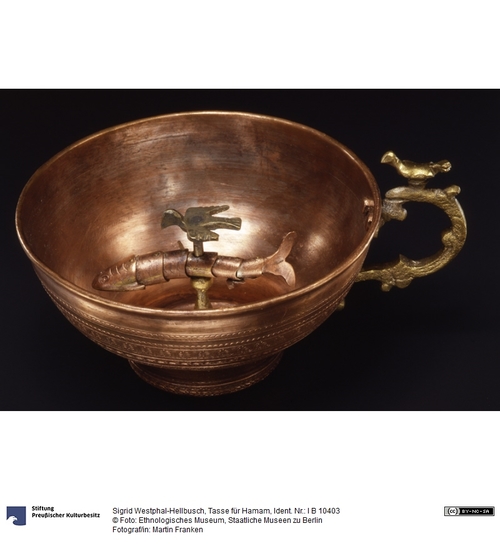Wassertasse (su tasi)
mit einem Fisch, der sich bewegt, wenn man daraus trinkt; eventuell auch beim Baden benutzt.
Der Fisch gilt als Symbol für Gesundheit und Glück. Es handelt sich um eine städtische Arbeit, wie sie heute nicht mehr hergestellt wird.
Kupfer, mit Messinggriff; Stab mit Vogel in der Mitte aus Messing. Das Gefäß und der bewegliche Fisch waren versilbert, die Gravierung außen geschwärzt.
Angaben zur Herkunft:
Sigrid Westphal-Hellbusch (6.1915 - 1.2.1984), Sammler
Türkei (Land/Region)
Inegöl bei Bursa (Stadt oder Gemeinde)
Erwerbungsort: Ankara
en

